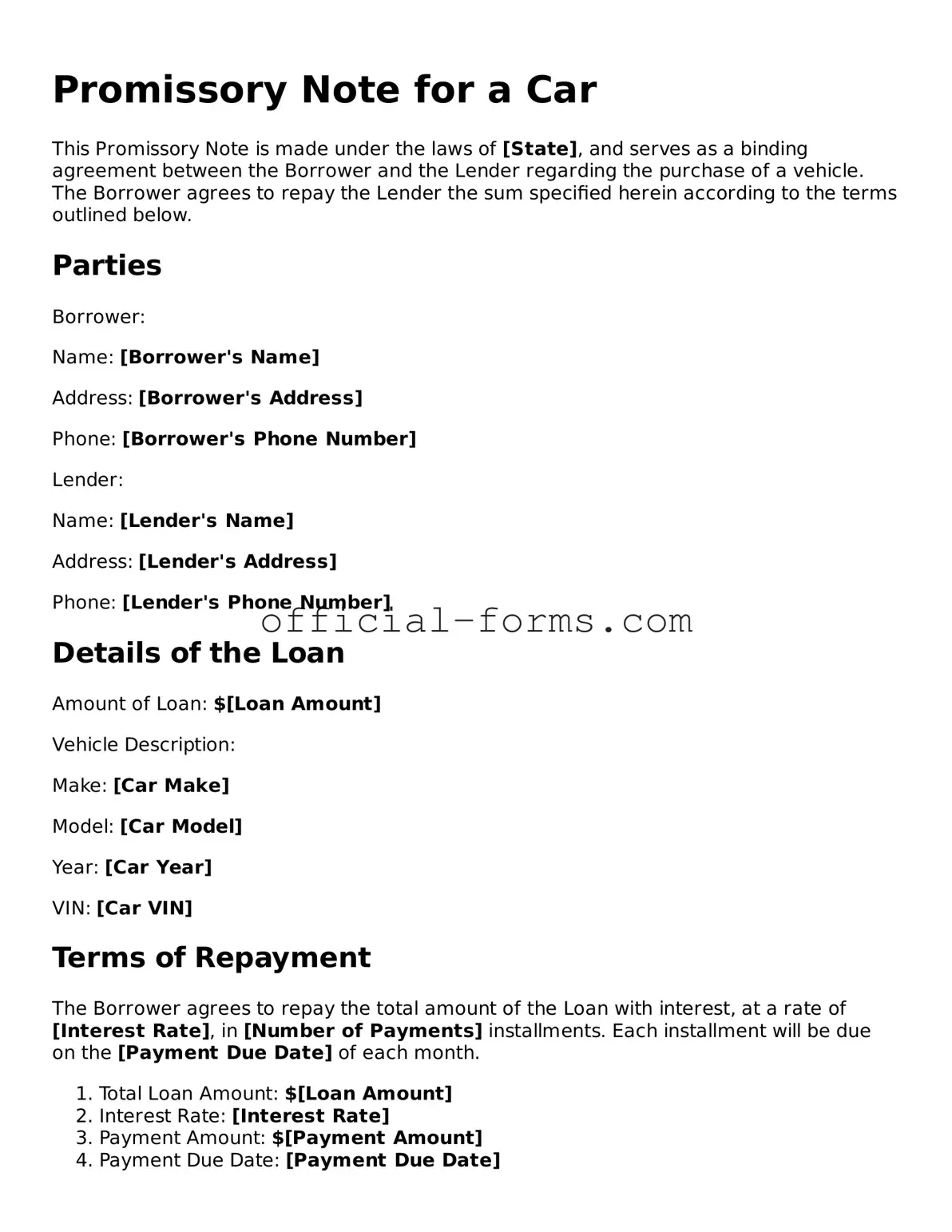When filling out a Promissory Note for a car, many people unknowingly make mistakes that can lead to confusion or even legal issues down the line. One common error is failing to include all necessary personal information. This includes not only your name and address but also the correct contact details for the co-signer, if applicable. Missing this information can create complications if you need to reach out to the other party.
Another frequent mistake is not clearly specifying the loan amount. It's crucial to write down the exact figure you are borrowing. If this number is vague or incorrect, it can lead to disputes later on. Always double-check that the amount matches what you discussed with the lender.
Many individuals also overlook the interest rate. It’s important to state whether the loan is interest-free or if it has a specific rate. If you fail to include this detail, it could lead to misunderstandings about how much you owe over time. Be clear and precise in this section to avoid any surprises.
People often forget to include the repayment terms as well. This means specifying how often payments are due and the duration of the loan. Without clear terms, both parties may have different expectations about when payments should be made, which can lead to frustration.
Another mistake involves the payment method. Some individuals neglect to mention how they will make payments—whether by check, bank transfer, or another method. This detail is important to ensure both parties are on the same page regarding the payment process.
Signing the document is another area where errors frequently occur. It's not just about putting your name on the line; you must also ensure that all parties involved sign the document. Missing a signature can invalidate the note and complicate matters later.
People sometimes forget to date the Promissory Note. A date is essential because it marks the beginning of the loan agreement. Without a date, it can be challenging to establish timelines for payments and obligations.
Additionally, failing to read the entire document before signing is a common pitfall. It’s easy to skim through, but every detail matters. Taking the time to review the note can prevent misunderstandings and ensure that all terms are understood by both parties.
Another mistake is not keeping a copy of the signed Promissory Note. After the document is completed, it’s vital to make sure that everyone involved has a copy for their records. This can help resolve any future disputes quickly and efficiently.
Finally, many people neglect to consult with a professional before signing. While it may seem straightforward, a quick review by someone knowledgeable can save you from potential headaches later. Don’t hesitate to seek advice if you’re unsure about any aspect of the Promissory Note.
